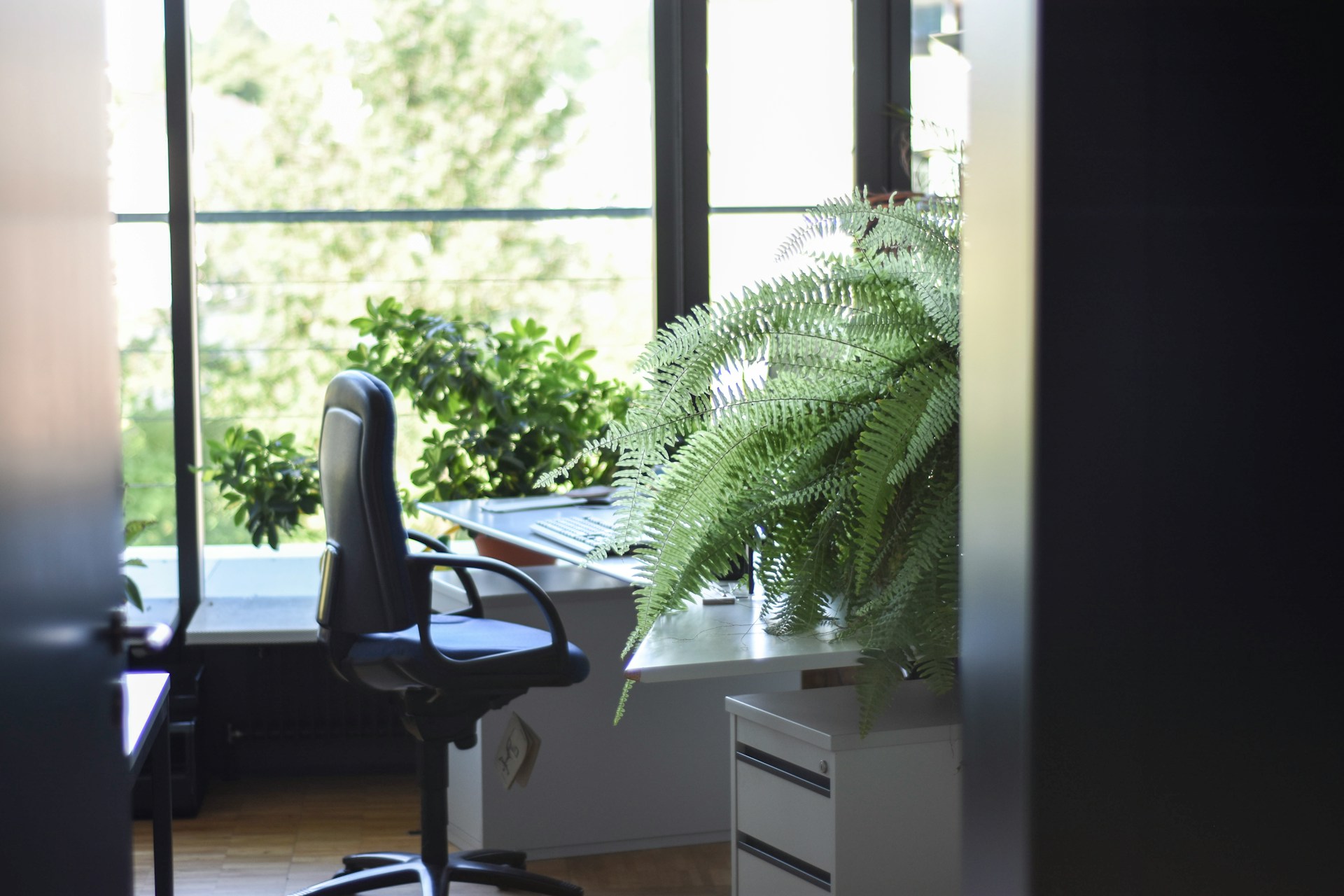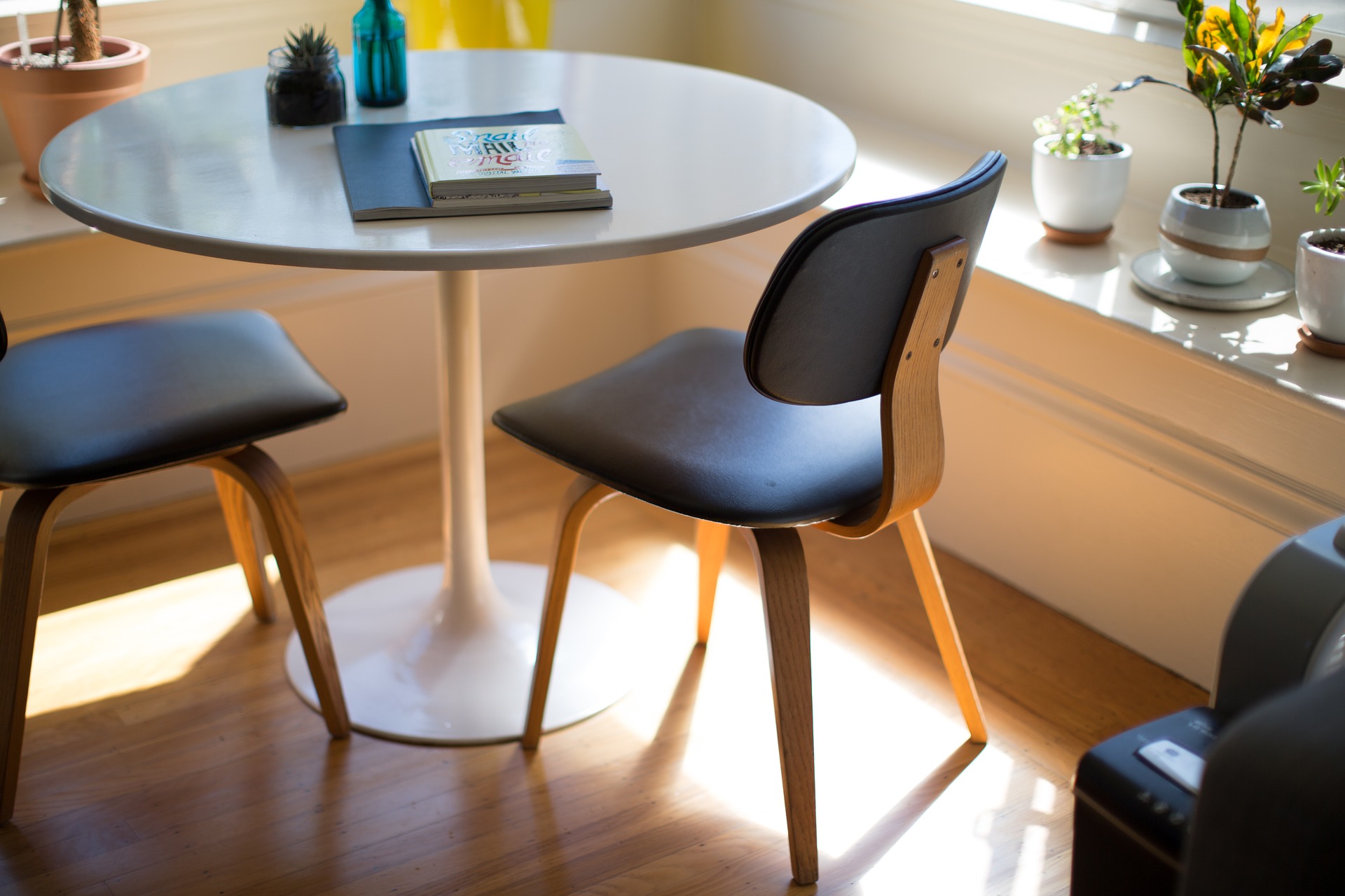Going out for a walk in a natural environment is enough to provide you with both energy and relaxation for the rest of the day. Many people who live in urban jungles feel the need to integrate more greenery into their lives, with homeowners keen on getting plants in their indoor areas. But what about the office, the place where you spend several hours each day and where you need to remain relaxed, composed and focused at all times? Turns out plants can help here as well. But how exactly do you create your miniature garden at your desk? Luckily, green spaces are easy to assemble, and all you need is a little creativity.

Desk plants
The types of plants you’ll want to have on and near your desk will largely depend on personal taste and the space available to you. You should make sure that your plants don’t bother any of your co-workers and that they don’t distract you from your work, either. There are many different types of plants you can add to your office area, including:
- Aloe: The best example of a low-maintenance plant, aloe will thrive in any environment where it gets a lot of bright sunlight. You can get a planter on wheels to get it close to a window sill with no hassle if your desk is not located in a particularly sunny spot. It only needs water once every couple of weeks, and the soil should be sandy to guarantee it gets the moisture it requires.
- Tillandsia: This extraordinary plant doesn’t ever need soil to grow. All you have to do is affix it to a natural material, such as driftwood or shells, but they can also do well in teacups. Unlike aloe, they don’t need as much light since they’re accustomed to growing among shade and branches in their natural environment.
- Dry bamboo: If you’re looking for a sturdy, highly resistant plant, you won’t go wrong with lucky bamboo. It needs filtered sunlight and plenty of fresh air, but it does well in dry air and doesn’t necessitate constant watering. The plant grows slowly on its own and will usually take on unique shapes as it develops. Weaves and spirals are some of the most common, but peculiar ones like hearts can appear as well, albeit typically as a result of intervention from growers.
- Cactus: The quintessential office plant, there are so many varieties of cacti out there that you’ll find it hard to settle on just one of them. Some types can also bloom. Since they don’t need blooming and grow relatively slowly, they typically don’t need to be repotted, but you should make sure they get plenty of sunshine.
- Bonsai: These miniature trees are more high-maintenance than regular plants, but taking care of one can be an incredibly rewarding endeavour. During the warmer months, between May and September, you should keep yours outside. The traditional Japanese method of growing bonsai has them grown and tended outdoors their whole lives. If that’s not doable for you, you should look for tree species that can be turned into indoor bonsai. You must also have to look for special flowerpots that can sustain their growth over a long time. After you become more adept at it, you can also try your hand at saikei, the art of creating miniature landscapes.
The advantages
But are there any particular advantages that come with having plants around you? The shortest answer is a definitive “yes”. Research uncovered the fact that being around plants improves productivity levels. Greenery allows you to be focused for longer. In today’s day and age, when attention spans are getting shorter, and it’s easy to get distracted by external stimuli, it’s not unheard of to need something to ground you in the present moment.
Plants can also lower stress levels, lower tension and minimise negative emotions like anger, irritation and hostility. Regardless of how well-balanced a work environment is, stressful situations will still arise periodically. The ups and downs of work can leave some employees feeling overwhelmed and helpless, something that contributes to the development or exacerbation of burnout symptoms.
A lesser-known quality of plants is that they can absorb sound. All parts, from the branches to the leaves, are effective at minimising noise because of the dynamic surface area. Green areas can also boost creativity precisely because they allow you to be more attentive to the tasks you must perform. When all your brainpower goes towards the work you have to finish, you can process things faster and more efficiently, which also means that you can come up with new solutions faster.
The idea that nature can result in improved attention and cognitive abilities is known as the Attention Restoration Theory. Last but not least, plants add to the aesthetic appeal of any room, creating more inviting spaces and improving well-being.
Zen garden
The authentic zen garden is a symbol of relaxation and contemplation. It typically doesn’t include much greenery and can be just the thing you need if space constraints limit the number of plants you can get. There are many models you can buy ready-made, but you can also create your own mini zen garden from scratch. You’ll need fine-grain sand, outdoor stones for a natural look, and a glass or wood container. You can also add plants, like bonsai or moss.
Essential oils are optional, but you should get them if you know that they can enhance your relaxation. Lastly, don’t forget to purchase a mini rake. You can find many that are specifically made for zen gardens. If you’re feeling particularly crafty, you can also make your own.
Bringing natural elements indoors is not a new phenomenon, and over the years, both anecdotal and empirical evidence has shown that plants have beneficial effects on the human mind and body. Being away from nature for too long can exacerbate stress levels and make you more prone to anxiety attacks or low mood. If your office space is devoid of any greenery, it’s time to reconsider its design and bring some plant friends inside.















